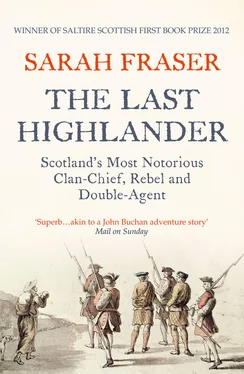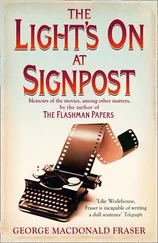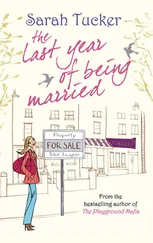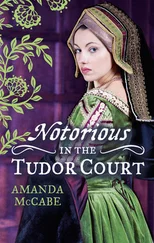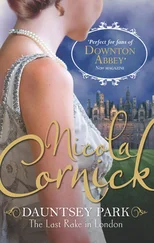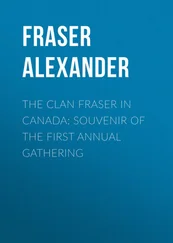In his youth, the Reverend James ‘mounted his Highland pony, and accompanied by a Highland servant, spent three years touring Britain, Europe and the Holy Land’ in order, he said, ‘to rectify the judgement, enrich the mind with knowledge’, and give it ‘a polish’. Though by turns a Calvinist and Episcopalian, he happily posed as a Roman Catholic to get a room in European monasteries. He visited over thirty European states and on his return wrote Triennial Travels, describing every town and city of note, starting with Inverness. He would dedicate his Chronicles of the Frasers to Simon when he became chief.
For almost five decades, Reverend James ministered at Kirkhill, a tiny settlement near Beauly, and served as family chaplain to the Frasers. As chronicler the Reverend also occupied the role of seanachie, or tradition-bearer, in the clan. In him the history of Scotland, England, Europe and the clan, actual and mythic, resided; he wove them together like a plaid, surrounding the Beaufort Fraser children with a solid sense of history, their duty to the living and to the dead. Their ancestors had served kings and country. So would they. This intoxicating blend of the literal and legendary fired their imaginations. Some of the oldest Gaelic songs, and even lullabies sung by wet nurses, rioted with bloody narratives of the honour their ancestors defended, and the outrages they avenged. Through such tales the children understood the Fraser loyalty to the doomed Stuart King Charles I.
At ceilidhs 3 there would be folk tales, poems, theology, history, politics, agriculture, meteorology, games, riddles, repartee, music and medicine, and gossip – all in the Gaelic they liked to speak at home. Great arguments raged over international and local news. In the martial society of the clans, Simon learned, the chief must loom larger than everyone else, keeping his enemies at bay, whilst earning the respect of close friends and allies.
If ceilidh debates grew too heated and threatened to turn bitter or to violence, someone might intervene and call for music, dance or a song – sometimes bawdy. Risqué verse was acceptable at any gathering – though satirising someone’s good name could land you in a duel or a feud. One piece of bawdy by the bravura baronet Sir Duncan Campbell of Glenorchy entitled Bod brighmhor ata ag Donncha (‘Duncan has a Potent Prick’) extended to thirty-two lines of self-praise. Typically Gaelic in spirit, the gist of it was this:
Grizzled Duncan’s organ
I guess is no great beauty,
Adamantine, wrathful,
ever ready to do his duty …
A rheum-eyed hooded giant,
sinuous, out-thrust face, spurty,
A cubit out from its bag,
ravaging, mighty knob-kerry.
Titillation was not the point (though it amused one clergyman enough to copy it into his personal poetry anthology); what this poem conveyed was the nature of a leader, of leadership. Its outrageousness merely educated by entertainment. The hero was a beast of eye-watering proportions and energy; the thought of him made women swoon. The part standing for the whole, the poem described a proper clan chief. The Viking culture of the rampaging warrior hero contributed features to the Celtic idea of an ideal chief. ‘Victorious in battle and conflict’, ‘fearsome’, ‘violent’, ‘wrathful’, with his ‘stately-purple … broad back’, it was the heroic duty of the ‘potent prick chief’ to generate and protect his own. He repelled rivals with the baleful glare of his single ‘canny’ eye, and with his stunning virility ensured the continuance of the natural order.
Laced with humour, verses like this carried a moral to the Beaufort boys, as they sat on the floor fireside in the main room at Tomich, taking it all in. There was no space in this world for a ‘sweet’ and ‘affable’ Fraser chief. Rather, the ceann cinnidh, the head of the kin, must be King Arthur, the Irish Diarmid, the Viking Beowulf, and Scots Wallace and his companion, Sir Simon Fraser, all rolled into one. The boys practised their swordsmanship imagining they were these great heroes, Simon taking the part of his namesake: Sir Simon the ‘Patriot’ Fraser – the ‘talk and admiration of all Europe’ – who was hung, drawn and quartered for his country’s freedom on 8 September 1306, a year after his leader, Wallace.
The Beaufort boys were raised to regard their homeland as the heart of the Highland world, connected to all the exotic parts of Europe the Reverend James visited and described to them. But Alexander, Simon, and John would need more than clan stories to perform their duties as future leading men in the modern world. They would need the experience, erudition and confidence that a broad-based education offered. So the boys were put on ponies and sent to school in Inverness to prepare them for university and the battles ahead.
Though barely twelve miles distance, Beauly and Tomich were a world away from the regional capital. Born and bred Invernessians did not much like Highlanders. The Beaufort Fraser boys were a blend of Highland and Lowland. Wild hill men caused trouble to a royal burgh that prided itself on its modern civic and religious values. Townsfolk were terrorised by the ‘bare-arsed banditti’ who ‘broke open their doors in the night time, and dig through their houses, plundering and taking away the whole moveables, and oftimes assassinating several poor people in their beds’, before heading back to their strongholds in the wilderness.
As civil society settled under Charles II’s rule, Inverness was more Lowland in character. Port towns like Inverness, and the sea lanes they sat on, thronged with traffic again. Over a hundred boats and ships could be anchored in Inverness harbour at any time; they strained at their ropes, ready to take scholars, curious travellers and merchants and their goods to and from the Continent. The Baltic ports, the great medical and ecclesiastical centres at Leyden and Paris, and the trading cities of the Hanseatic League, were more accessible and more familiar to educated Highlanders than most English cities and ports. Thousands of skiffs, fishing boats and ships hauling iron, coal and timber, fish and exotic commodities from all over the known world, sailed in and out of the lesser ports round the coast of northern Scotland.
Between Tomich and Inverness, the men and places that shaped young Simon Fraser’s outlook were at once insular and remote from Edinburgh and London, but also cosmopolitan and Europhile. Dutch Leyden was closer in every way than English London. Thomas Beaufort wanted to educate his boys to belong in all these worlds – Continental and clan, Highland and Lowland, theocratic and Renaissance humanist. A period at grammar school in Inverness would brush up their Presbyterian theology, and their Latin and Greek. Simon would later study at university in Aberdeen, where he would be taught in these classical languages, as young men were across Europe. He needed to be articulate and literate in both.
The grammar school at Inverness was a room under the roof of the Presbyterian church on Kirk Street. The building stood on the banks of the River Ness. The Kirk Session of Elders that administered the school’s business also interfered freely in the lives of the townsfolk. In fact, they saw it as a duty, and ran themselves ragged to keep the people ‘godly’ in the face of Highlanders’ fondness for ‘uncleanness, riots, and extravaiging’ – that is, strolling about the streets when they should be at Divine service. When Simon was a boy, Scotland was a Presbyterian theocracy and men could be hanged for blasphemy, such as denying the reincarnation of Christ or doubting the doctrine of the Holy Trinity.
Along with the Town House, the Market Cross, the Court House, the Gaol and Armoury, the church was one of the matrices of Inverness life. Not only did it house the box pews in which each family shut themselves up to worship; in the body of the kirk, there were also desks for various traders to work from, as well as the school in the attic. Many of Simon’s classmates could not buy a seat in the schoolroom, let alone a table. The children would peer through the holes in the floorboards, watching the men below negotiate with locals and strange-looking foreigners. Heather and grass on the floors muffled draughts and softened the boards under their bottoms. A Lowland minister unhappily stationed to the Highlands, described the students crouching there ‘like pigs in a sty’. Slates in hand, they gazed up at their dominie, Mr Jaffray, who also yearned to return south as soon as possible from this strange place. ‘English ministers did not know much more of Scotland than they did of Tartary,’ another Lowlander concluded.
Читать дальше
